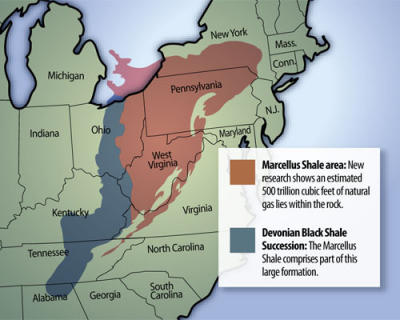Cas Holloway Brings Energy And Vision To NYC’s DEP
By admin on March 2, 2010
 On February 26, 2010, the New York League of Conservation Voters (“NYLCV”) hosted an Eco-Partners Breakfast with New York City Department of Environmental Protection (“DEP”) Commissioner Cas Holloway, DEP’s energetic new commissioner. Mayor Bloomberg appointed Mr. Holloway to head DEP in November 2009 after a year long nation-wide search. Prior to his appointment, Mr. Holloway served as a Senior Advisor and Chief of Staff to Ed Skyler, New York’s Deputy Mayor for Operations. Mr. Holloway, a former Cravath associate who earned an undergraduate degree at Harvard and a law degree from the University of Chicago, brings to the position a rare combination of political savvy and operational know how that should serve DEP well. Although DEP has a $1,000,000 budget and a staff of over six thousand, it often flies below the radar screen. DEP performs four basic functions. (1) First and foremost, it is a water utility. It is responsible for the supply, distribution and treatment of New York City’s drinking water. Unlike California, which delegates the supply and treatment functions to different agencies, both functions fall within DEP’s aegis in New York; (2) DEP is a customer service agency. It more or less determines the price of water; (3) DEP is a capital projects agency. For example, it is building at a cost of $6,000,000,000 the third underground tunnel that will carry drinking water from upstate to millions of New Yorkers; and (4) DEP is an environmental regulator on, among other things, air and water issues. Based upon his first few months on the job, Cas Holloway appreciates the importance of working with various stakeholders and interest groups. On February 25, 2010, Mayor Bloomberg, Mr. Holloway’s agency, NYS Department of Environmental Conservation and several environmental groups announced an agreement-in-principle to significantly improve the health of Jamaica Bay through sewage treatment plant upgrades and investments in marsh restoration. As a result of the agreement-in-principle, DEP headed off a potentially costly Clean Water Act litigation arising from the alleged failure of its four sewage treatment plants to prevent nitrogen discharges to the bay. Mr. Holloway described the resolution of the Jamaica Bay dispute as a "paradigm shift" and a case study for how he hopes DEP will resolve future disputes. Up next for Mr. Holloway is the threat to water quality in the New York City Watershed posed by natural gas companies seeking permits to exploit valuable natural gas deposits in the Marcellus Shale through the extensive use horizontal drilling and hydrofracking. All New Yorkers should wish Mr. Holloway well in addressing this new Watershed concern.
On February 26, 2010, the New York League of Conservation Voters (“NYLCV”) hosted an Eco-Partners Breakfast with New York City Department of Environmental Protection (“DEP”) Commissioner Cas Holloway, DEP’s energetic new commissioner. Mayor Bloomberg appointed Mr. Holloway to head DEP in November 2009 after a year long nation-wide search. Prior to his appointment, Mr. Holloway served as a Senior Advisor and Chief of Staff to Ed Skyler, New York’s Deputy Mayor for Operations. Mr. Holloway, a former Cravath associate who earned an undergraduate degree at Harvard and a law degree from the University of Chicago, brings to the position a rare combination of political savvy and operational know how that should serve DEP well. Although DEP has a $1,000,000 budget and a staff of over six thousand, it often flies below the radar screen. DEP performs four basic functions. (1) First and foremost, it is a water utility. It is responsible for the supply, distribution and treatment of New York City’s drinking water. Unlike California, which delegates the supply and treatment functions to different agencies, both functions fall within DEP’s aegis in New York; (2) DEP is a customer service agency. It more or less determines the price of water; (3) DEP is a capital projects agency. For example, it is building at a cost of $6,000,000,000 the third underground tunnel that will carry drinking water from upstate to millions of New Yorkers; and (4) DEP is an environmental regulator on, among other things, air and water issues. Based upon his first few months on the job, Cas Holloway appreciates the importance of working with various stakeholders and interest groups. On February 25, 2010, Mayor Bloomberg, Mr. Holloway’s agency, NYS Department of Environmental Conservation and several environmental groups announced an agreement-in-principle to significantly improve the health of Jamaica Bay through sewage treatment plant upgrades and investments in marsh restoration. As a result of the agreement-in-principle, DEP headed off a potentially costly Clean Water Act litigation arising from the alleged failure of its four sewage treatment plants to prevent nitrogen discharges to the bay. Mr. Holloway described the resolution of the Jamaica Bay dispute as a "paradigm shift" and a case study for how he hopes DEP will resolve future disputes. Up next for Mr. Holloway is the threat to water quality in the New York City Watershed posed by natural gas companies seeking permits to exploit valuable natural gas deposits in the Marcellus Shale through the extensive use horizontal drilling and hydrofracking. All New Yorkers should wish Mr. Holloway well in addressing this new Watershed concern.


 natural gas and oil drilling buried in the DEC’s hazardous spills database. However, it was reported on January 11, 1010 that
natural gas and oil drilling buried in the DEC’s hazardous spills database. However, it was reported on January 11, 1010 that  Environmental groups and proponents of economic development and natural gas exploration are on a collision course of competing economic and environmental interests involving an enormous untapped reservoir of natural gas in the
Environmental groups and proponents of economic development and natural gas exploration are on a collision course of competing economic and environmental interests involving an enormous untapped reservoir of natural gas in the